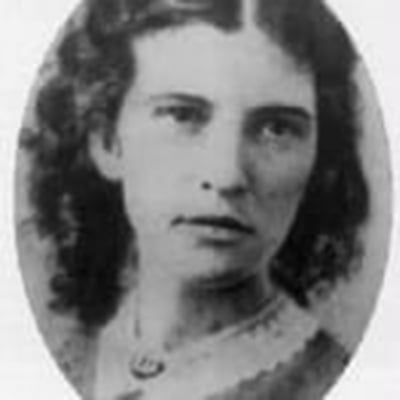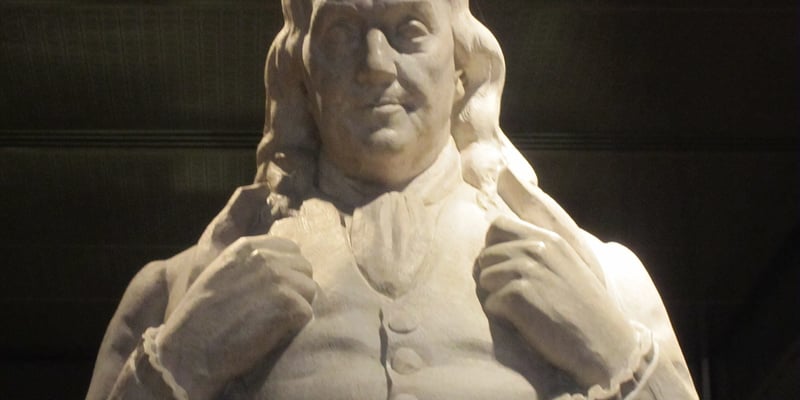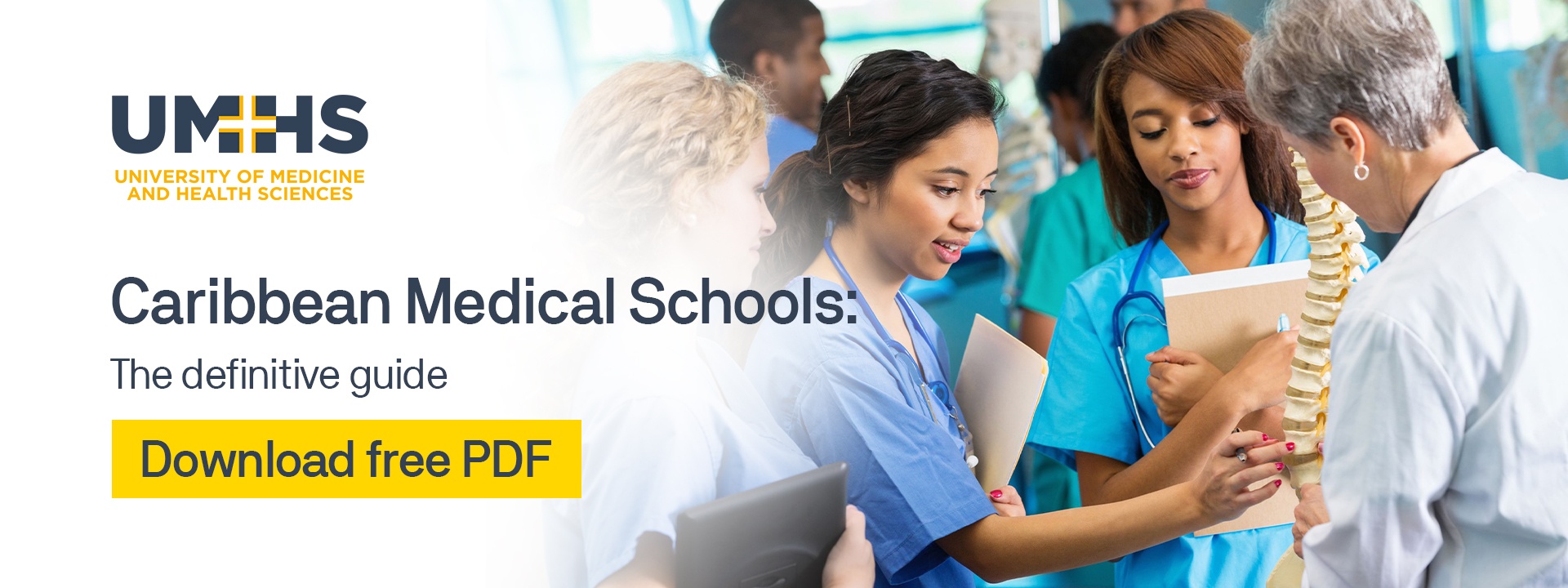As the USA celebrates its 237th birthday this week on July 4th (Independence Day), UMHS looks at American medical milestones and breakthroughs since the Declaration of Independence to show how far medicine has come since colonial times.
At the time of the American Revolution, medicine—and medical education in particular—was nothing like it is today. As Laurie Trask Mann says in Changing Medical Practices in Early America, “During the colonial era, doctors' education was informal. Most were literate, but some, particularly those raised outside of New England (where primary schools were a part of almost every town) were not. A man who wished to practice medicine did not need any type of certification. Most did have a period of apprenticeship with an established physician, but even this was not a requirement.”
America has made major progress in medicine since then, but it took awhile. For most of the 18th century and part of the 19th, Europeans were credited with most medical breakthroughs. However, Americans started contributing to medical advances as the nation grew. Here’s a sample of the historical highlights in medicine that have changed American healthcare since July 4, 1776:
1779: Thomas Jefferson’s alma mater, the College of William and Mary in Williamsburg, VA establishes a graduate program in medicine.
1784: American statesman Benjamin Franklin invents bifocal eyeglasses, easing short- and long-distance vision problems, and making it possible for physicians to practice while wearing just one pair of glasses.
1817: In New Orleans, Louisiana, the first American medical society, the Creole Societe Medicale de la Nouvelle-New Orleans, is founded. Although New Orleans has been part of the USA since the Louisiana Purchase in 1803, the city is still primarily French-speaking, so all transactions of the Creole Societe Medicale de la Nouvelle-New Orleans are in French.
1820: The first English-speaking American medical society, the Physio-Medical Society, is established in New Orleans.
1823: A building with an apothecary is erected in New Orleans by Louis Joseph Dufilho, Jr., America’s first licensed pharmacist. It houses today’s Historical Pharmacy Museum.
Discover if a Caribbean Medical School is right for you.
Learn about the most popular alternative path to becoming a doctor.
1844: American dentist Horace Wells uses nitrous oxide (“laughing gas”) as an anesthetic.
1849: American surgeon Crawford W. Long uses ether as a general anesthetic during surgery. He doesn’t publish his results, so credit goes to dentist Dr. William Morton at a later date.
1846: Boston dentist Dr. William Morton demonstrates ether's anesthetic properties during a tooth extraction
1847: David Jones Peck becomes the first African American to graduate from medical school (from Rush Medical College in Chicago, IL).
 1849: Elizabeth Blackwell becomes the first American woman to receive a medical degree (from Geneva Medical College in Geneva, NY).
1849: Elizabeth Blackwell becomes the first American woman to receive a medical degree (from Geneva Medical College in Geneva, NY).
1879: First vaccine for cholera.
1881: First vaccine for anthrax.
1882: First vaccine for rabies.
1896: First vaccine for typhoid fever.
1897: First vaccine for plague.
1901: Austrian American Karl Landsteiner develops ABO system of blood typing.
1902: U.S. Public Health Service created
(Photo, inset above) Elizabeth Blackwell becomes first U.S. female doctor in 1849. Photo: Wikimedia Commons
1907: First successful blood transfusion using Karl Landsteiner’s ABO blood-typing technique.
1913: Dr. Paul Dudley White becomes one of America’s first cardiologists. He later becomes a pioneer in the use of the electrocardiograph, a diagnostic tool for numerous heart ailments.
1922: Insulin first used to treat diabetes.
1923: First vaccine for diphtheria.
1926: First vaccine for pertussis (whooping cough).
1927: First vaccine for tuberculosis.
1927: First vaccine for tetanus.
1935: First vaccine for yellow fever.
1935: American Dr. John H. Gibbon, Jr. successfully uses a heart-lung machine for extracorporeal circulation of a cat (i.e., all the heart and lung functions are handled by the machine while surgery is performed). Dr. Gibbon uses this method successfully on a human in 1953. It is now commonly used in open-heart surgery.
1937: First vaccine for typhus.
1937: American Bernard Fantus starts the first blood bank at Cook County Hospital in Chicago, using a 2% solution of sodium citrate to preserve the blood. Refrigerated blood lasts 10 days.
1942: The first dose of penicillin is given in the United States at Yale-New Haven Hospital on March 14 to a patient dying of septicemia.
1943: Ukrainian-born American microbiologist Selman A. Waksman discovers the antibiotic streptomycin, later used in the treatment of tuberculosis and other diseases.
1943: In the first 5 months of 1943, 400 million units of penicillin are produced in the USA. In the next 7 months, 20.5 billion units are produced, an increase of over 500 times.
1945: 650 billion units of penicillin are distributed each month in the USA.
1945: First vaccine for influenza.
1952: American Paul Zoll develops the first cardiac pacemaker to control irregular heartbeat.
1954: Dr. Joseph E. Murray of Massachusetts performs the first kidney transplant between identical twins.
1955: Native New Yorker Jonas Salk develops the first polio vaccine.
1957: At the Cleveland Clinic in Ohio, Dr. Willem Kolff and Dr. Tetsuzo Akutzu implant the first artificial heart in a dog. The animal survives 90 minutes.
1962: First oral polio vaccine introduced (as an alternative to the injected polio vaccine)
1964: First vaccine for measles.
1965: Medicare and Medicaid are introduced to the U.S. healthcare system for, respectively, senior citizens and the poor.
1967: First vaccine for mumps.
1970: First vaccine for rubella.
1974: First vaccine for chicken pox.
1977: First vaccine for pneumonia.
1978: First vaccine for meningitis.
1980: W.H.O. (World Health Organization) announces smallpox is eradicated.
1981: First vaccine for hepatitis B.
1982: American Dr. William DeVries implants the Jarvik-7 artificial heart into patient Barney Clark. Clark lives 112 days.
1983: Scientists identify HIV, the virus that causes AIDS.
1992: First vaccine for hepatitis A.
1996: Dolly the sheep becomes the first mammal cloned from an adult cell (Dolly dies in 2003).
1998: First vaccine for Lyme disease.
2000: Scientists with the International Human Genome Project release a rough draft of the human genome to the public. For the first time the world can read the complete set of human genetic information and begin to discover what our roughly 23,000 genes do.
2007: Scientists discover how to use human skin cells to create embryonic stem cells.
2010: The Patient Protection and Affordable Care Act (PPACA), commonly called Obamacare or the Affordable Care Act (ACA), is signed into law by President Barack Obama, creating America’s first socialized health insurance program.
2012: The U.S. Supreme Court upholds the constitutionality of most of the ACA in the case National Federation of Independent Business v. Sebelius.
Sources: Medical Advances Timeline | Infoplease.comhttp://www.infoplease.com/ipa/A0932661.html#ixzz2XpFhyMVPhttp://www.medpagetoday.com/InfectiousDisease/PublicHealth/17594
(Top photo) Bust of Benjamin Franklin at the National Portrait Gallery. Photo: Wikimedia Commons
About UMHS:
Built in the tradition of the best US universities, the University of Medicine and Health Sciencesfocuses on individual student attention, maintaining small class sizes and recruiting high-quality faculty. We call this unique approach, “personalized medical education,” and it’s what has led to our unprecedented 96% student retention rate, and outstanding residency placements across the US and Canada. UMHS is challenging everything you thought you knew about Caribbean medical schools.

Scott is Director of Digital Content & Alumni Communications Liaison at UMHS and editor of the UMHS Endeavour blog. When he's not writing about UMHS students, faculty, events, public health, alumni and UMHS research, he writes and edits Broadway theater reviews for a website he publishes in New York City, StageZine.com.


















